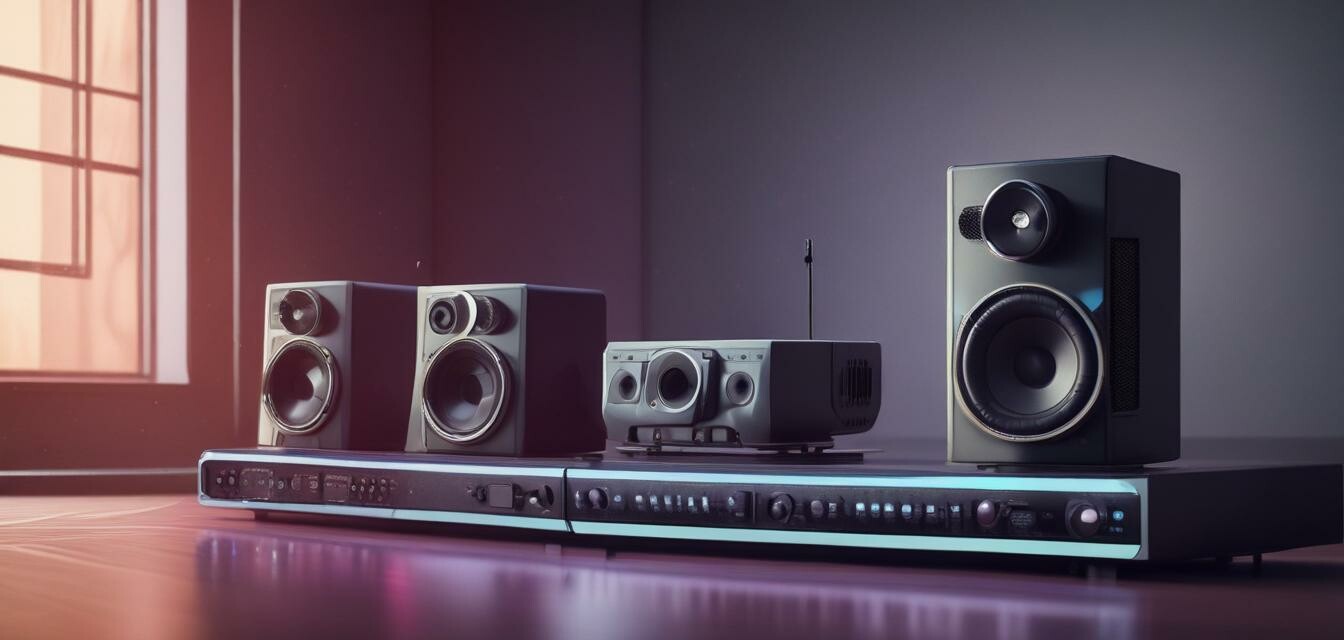
Exciting New Audio Technologies to Watch in 2025
As we look toward the horizon of audio innovation, the year 2025 promises to unveil groundbreaking technologies that will reshape how we experience sound. This article explores some exciting developments making waves in the audio industry, offering a glimpse into the future of wireless audio technology.
- Emerging technologies will enhance user experience significantly.
- Wireless audio devices are becoming more integrated and user-friendly.
- Advancements in smart audio systems will deliver greater personalization.
- Expect innovations in immersive sound experiences.
The evolution of audio technology
Audio technology has come a long way in recent years, transforming how we listen to music, watch films, and interact with our devices. From the advent of wireless speakers to cutting-edge audio processing techniques, the landscape is rapidly evolving. In 2025, expect to see further advancements that will elevate the standards of audio experiences.
Key Trends to Watch
As audio technology continues to progress, several trends are poised to dominate the market:
- Spatial Audio: The move towards three-dimensional sound experiences that create an immersive listening environment.
- Voice Activation: Enhanced integration of voice assistants in audio devices, providing seamless control.
- Smart Home Integration: Improved connectivity with smart home systems, allowing for more cohesive audio experiences.
- Artificial Intelligence: Utilizing AI for personalized audio recommendations and adjustments.
Emerging Technologies in 2025
Let's take a closer look at some of the most promising audio technologies expected to emerge in 2025:
| Technology | Description | Potential Impact |
|---|---|---|
| Advanced Wireless Protocols | New protocols for faster, more reliable audio streaming. | Improved sound quality and reduced latency for real-time applications. |
| Augmented Reality (AR) Audio | Enhancing audio-visual experiences with location-based sound. | Transforming gaming and entertainment with immersive soundscapes. |
| AI-Driven Personalization | Algorithms that adapt audio settings to user preferences. | Creating a more personalized listening environment. |
| Eco-Friendly Audio Devices | Use of sustainable materials in product designs. | Reducing environmental impact while maintaining high performance. |
| Hybrid Audio Technology | Combining traditional and digital audio for richer sound. | Bringing a unique audio experience to listeners. |
Spatial Audio: A Game Changer
Spatial audio technology is set to revolutionize the way we listen to music and movies. By replicating the experience of hearing sound from different directions, it allows listeners to immerse themselves fully in their audio environment. Companies are rapidly developing this technology, which integrates seamlessly with headphones and home audio systems, providing an experience that goes beyond standard stereo sound.
Integration with Smart Devices
2025 is expected to see the next level of integration between audio technologies and smart home systems. As smart speakers become central to many households, their ability to coordinate with other smart devices will enhance user experience.
Features to look forward to include:
- Control over multiple devices from one interface.
- Synchronized audio playback across rooms.
- Automated audio settings based on user routines.
Challenges Ahead
While the future looks bright for audio technology, there are challenges that need to be addressed. Industry experts highlight concerns such as:
- Privacy Issues: The use of voice assistants raises questions about data security.
- Market Saturation: With a plethora of audio devices available, distinguishing features may become less impactful.
- Sustainability: There's a growing need for eco-conscious production methods in audio technology.
Conclusion
The audio technology landscape in 2025 looks promising, with innovations aimed at enhancing user experiences. From spatial audio to smart home integration, the future holds many exciting developments. As we stay updated with the latest news in wireless audio, it’s essential to keep an eye on how these technologies can change the way we interact with sound.
Pros
- Enhanced audio experiences with spatial audio.
- Seamless integration with smart home devices.
- Personalized audio settings driven by AI.
- Easier access to high-quality sound on-the-go.
Cons
- Concerns regarding privacy with voice assistants.
- Potential market saturation affecting user choices.
- The need for sustainable practices in technology production.
Stay tuned as we continue to explore these upcoming innovations in our blog on trends in audio technology and check our products page for new releases and updates!
